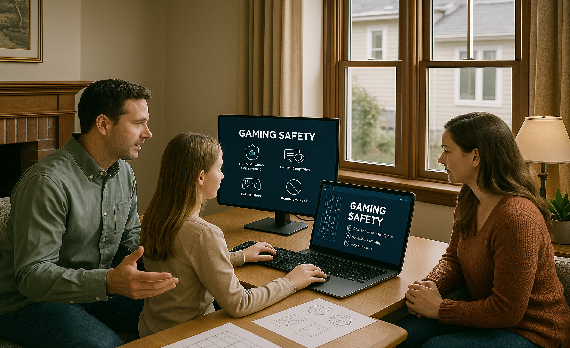Historical preservation projects often involve the careful restoration of original glass elements that require specialized knowledge of traditional manufacturing techniques and period-appropriate materials. Restoration glass work demands skilled craftspeople who understand glazing methods, lead came construction, and the chemical composition of period glass materials. These restoration projects preserve architectural heritage while adapting historical buildings for contemporary use, creating spaces that maintain their original character while meeting modern safety and efficiency standards.
Preserving the past through meticulous restoration not only safeguards architectural heritage but also highlights the importance of thoughtful stewardship across generations. Similarly, in today’s rapidly evolving digital landscape, another form of stewardship is emerging, one that involves guiding and protecting younger generations as they navigate immersive digital gaming environments.
Understanding Digital Gaming Environments
Modern gaming platforms have evolved into complex digital ecosystems that offer immersive experiences while presenting unique challenges for child safety and parental oversight. These environments feature social interaction capabilities, in-game purchases, and content sharing functions that require careful monitoring to ensure age-appropriate experiences.
Parents must understand various gaming platforms, their safety features, and potential risks to effectively guide their children’s gaming activities.
Effective parental guidance requires understanding of risks while recognizing the positive aspects of gaming, including skill development, social connections, and creative expression opportunities.
Implementing Effective Parental Control Systems
Parental control software provides tools for monitoring and restricting children’s gaming activities, including:
- Time limits
- Content filtering
- Communication controls
These systems enable parents to create customized gaming environments that align with family values while allowing children to enjoy age-appropriate gaming experiences. Effective implementation requires ongoing adjustment based on child development and changing gaming preferences.
Platform-specific controls offered by gaming consoles and online services provide built-in safety features that complement third-party parental control solutions. These controls typically include privacy settings, friend request management, and spending limits that help parents maintain oversight of their children’s gaming activities.
Communication and Digital Citizenship Education
Open communication about gaming experiences helps children develop critical thinking skills necessary for navigating online environments safely and responsibly. Parents who engage in conversations about gaming content, online interactions, and digital citizenship create opportunities to address concerns and reinforce positive behaviors.
Digital citizenship education teaches children about respectful online behavior, privacy protection, and the importance of reporting inappropriate conduct. These skills become essential as children increasingly participate in online communities and social gaming environments.
Age-Appropriate Content and Time Management

Checking on content rating is a crucial tool as it offers guidance in choosing a game that is fit with the children’s growing demands, and family values. Understanding these rating systems helps parents make informed decisions about game purchases while teaching children to evaluate content appropriateness independently.
Screen time management strategies help families establish healthy boundaries around gaming activities while ensuring that children maintain balanced lifestyles that include physical activity, social interaction, and academic responsibilities. These approaches require flexibility and ongoing adjustment as children grow and their interests evolve. Parents can promote balanced gaming by encouraging diverse activities, setting clear expectations, and modeling healthy technology use patterns.

